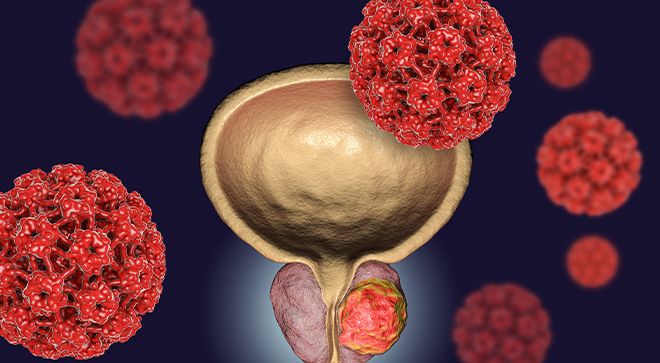News
Video
‘Paths’ of Treatment Possibilities in Prostate Cancer
Author(s):
An expert spoke with CURE® about the next steps for patients recently diagnosed with prostate cancer and the types of treatments they may receive.
For patients with prostate cancer, it’s important to know the next steps in terms of possible treatment that can be received, which is why CURE® spoke with Dr. Stephanie Berg, a medical oncologist at Dana-Farber’s Lank Center of Genitourinary Oncology, about the “paths” of treatment patients could take.
This is particularly important considering how common prostate cancer is. In a lifetime, approximately one in 8 men will receive a diagnosis of prostate cancer, although the risk factors may vary based on age, race/ethnicity, among other factors, according to the American Cancer Society.
When a urologist reports that a prostate-specific antigen test is abnormal, Berg noted that patients will either receive a biopsy via a needle to help determine potential treatment options or will undergo active surveillance. This means patients may not receive treatment immediately but will be closely monitored through routine blood tests, imaging of the prostate, bladder and lymph nodes within the pelvis, and biopsies.
READ MORE: Plant-Based Diet May Boost Quality of Life After Prostate Cancer
Transcript:
When you get the PSA test and determine that it's abnormal, you should go for a prostate cancer evaluation. Typically, the urologist who is a doctor [who specializes] in the male and female genital urinary systems, will recommend a biopsy and there's obviously different types of biopsy that one can get, usually something that's either guided by an ultrasound or MRI, which is actually more common [and] what we do here at the [Dana-]Farber. And it's also about surveillance, too, because perhaps a biopsy isn't needed right now or there are other things that could preclude you from getting a biopsy.
So once you have a diagnosis of prostate cancer, which is only done by needle biopsy of the prostate, which is through the perineum approach, or through trans rectally of taking samples of the prostate again at the base of the bladder where the prostate is located, your doctor, usually again, the urologist, will go over either surgery, removal of the prostate or refer you to a specialist called a radiation oncologist and someone like myself, a medical oncologist, to discuss [whether] the prostate will stay inside but using external radiation therapy or internal radiation type treatments, and medication treatments that I would provide or the radiation oncologist would provide called androgen deprivation therapy, which is lowering your testosterone level to help treat your prostate cancer. So, there are two different paths one can go down in the beginning if the prostate cancer is in the prostate.
For more news on cancer updates, research and education, don’t forget to subscribe to CURE®’s newsletters here.




